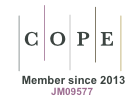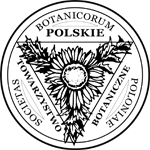Kwiaty promieniste o koronach rurkowatych zamkniętych (typ RC), rurkowato-języczkowatych (typ RJ) i języczkowatych (typ J) u astra chińskiego (Callistephus chinensis (L.) Nees). Dziedziczenie [Ray florets with closed tubular corollas (RC type), tubular-ligulated (RJ type) and ligulated (J type) in China aster (Callistephus chinensis (L.) Nees). Heredity]
Alicja Wosińska
Abstract
The improper description and classification of two Polish cultivars of China aster ('Roma' and 'Srebrzysta Gwiazdka') were corrected. A new type of ray florets with tubular – ligulated (RJ type) and closed tubular (RC type) corollas was described. The type of heredity of the above mentioned types of florets and florets with ligulated corollas was determined. The work is based on our own material: radiomutant MG and its offspring as well as the F1 and F2 generations of hybrids obtained after crossing three cultivars: 'Goplana' × 'Roma' and 'Goplana' × 'Srebrzysta Gwiazdka' (i.e. J type × RC type). ft was observed that the RJ type of corollas did not remain in the type. In the offspring of plants with such florets, always three types of segregants were present: plants with ray florets with ligulated, tubular - ligulated and tubular corollas. It was proved that it corresponds to the 1:2:1 ratio. It means that the formation of the RJ type corollas results from the presence of both alleles in the heterozygote. It was proposed to mark the gene conditioning the ligulated corolla form with the symbol L, (from Liguliformes) and the total corolla accretion with the symbol It. Thus the described phenotypes correspond to the following genotypes: LtLt - determines the appearance of ligulated corollas, Ltlt – tubular – ligulated corollas and ltlt – closed tubular corollas.
Keywords
China aster; radiomutations; ray florets; genetics
DOI:
https://doi.org/10.5586/aa.2002.048
Journal ISSN:- 2300-357X (online)
- 0065-0951 (print; ceased since 2016)
| | This is an Open Access journal, which distributes its content under the terms of the Creative Commons Attribution License, which permits redistribution, commercial and non-commercial, provided that the content is properly cited. | |
| | |






